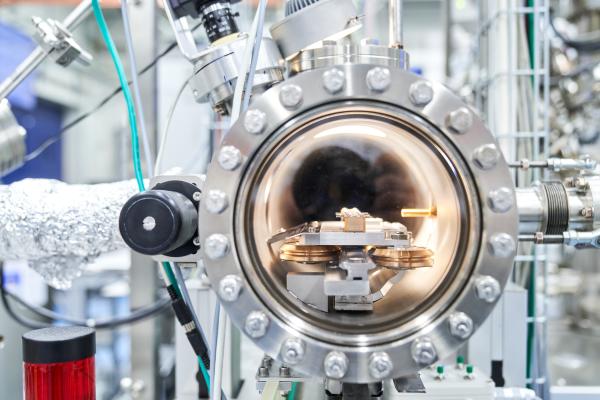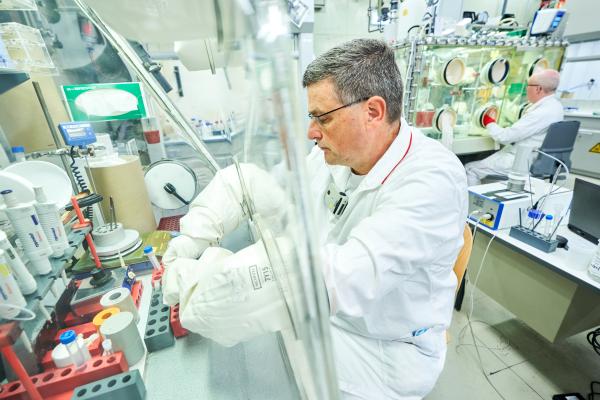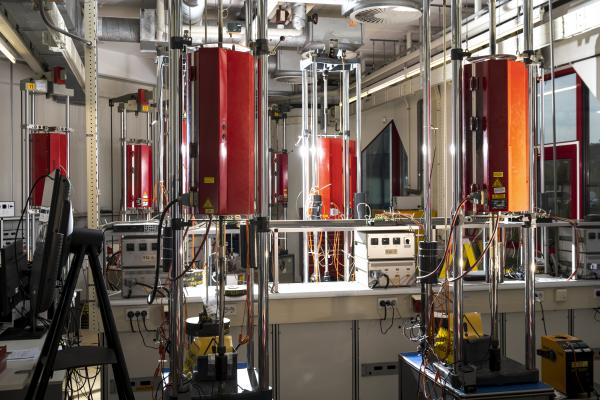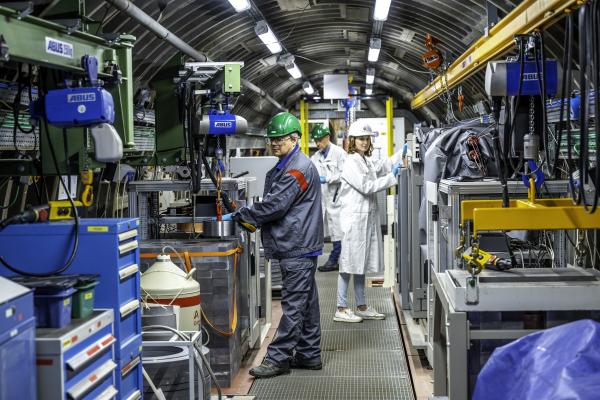This year, the European Commission's Joint Research Centre (JRC) celebrates the 60th anniversary of its Nuclear Safety and Security activities. For the last 60 years, the JRC has been developing and applying solid nuclear expertise and making available unique nuclear research infrastructures to positively impact economic and social development in the EU Member States and around the world.
Even though the original research programme of the JRC has been changing during the decades, today the nuclear activities are still an important part of the entire JRC research portfolio. Under the mandate of the EURATOM Treaty, they consist of the implementation of the JRC Euratom Research and Training programme and the maintenance and dissemination of nuclear competences in Europe, to serve both ''nuclear'' and ''non-nuclear'' Member States.
The aim of the nuclear work developed at the JRC is to support the relevant policy DGs with independent, technical and scientific evidence in the areas of nuclear safety, security, safeguards and nuclear science applications. It also ensures the role of the JRC as an active key partner in nuclear international networks and collaborates with international organisations and prominent Academia and Research Institutes.
Read about the journey of the 60 years of Nuclear Safety and Security:
Timeline
These timelines detail recorded events since the creation of JRC and its nuclear safety and security activities roughly 60 years ago to the present day.
- 1957Signature of the Euratom Treaty in Rome
Signing of the Euratom Treaty in Rome on the European Economic Community (EEC) and the European Atomic Energy Community (Euratom). Article 8 calls for the European Commission to establish the Joint Nuclear Research Centre (JNRC), to ensure a uniform nuclear terminology and a standard system of Nuclear Measurements.
- 1959Formal signature and Inauguration of the Joint Nuclear Research Centre in Ispra site and construction the of the Ispra research reactor.
- 1960Signature of the Karlsruhe site agreement (entered into force on 30/10/1962).
In addition, at the same year the Institute for Materials and Measurements was funded in Geel (Belgium).
- 1961Signature of the Site Agreement in Petten
In the City of Petten (the Netherlands), the material test reactor was established and under the name of High Flux Reactor (HFR) commences operation for the first time.
- 1962-63JRC Ispra
Construction of the ESSOR reactor in Ispra started in 1963, whilst in 1962 the construction of the reactor ECO (ORGEL critical experiment) was launched.
- 1963Official groundbreaking of the Institute for Transuranium in Karlsruhe (Germany).
- 1971The “N” was dropped from its name when JRC officially started to work in non-nuclear fields.
Environment, remote sensing, and renewable energies (photovoltaic) were among the many scientific topics already addressed in that period. European Commission adopts a decision so that the JRC will diversify its activities beyond nuclear to include non-nuclear technologies, concentrating R&D more on safety and safeguards. In the following years, the JRC increasingly oriented its work towards policy support.
- 1983Nuclear reactor at JRC Ispra was shut down.
- 198825th anniversary of ITU was celebrated
ITU had now one of the best laboratories in the world with extensive sample-making preparation capabilities and a modest suite of experimental techniques.
- 1992The physical characterisation of nuclear material develops into the field of “nuclear forensics”
Unknown material seized by the police and coming to the Institute can be identified with respect to its composition, its age, and even where (and how) it was produced. With the demise of the Soviet Union in the early' 90s and the increase in illicit trafficking of nuclear material this capability becomes publicly well accepted, and the JRC-ITU has now an important role developing new methods of analysis.
- 2013JRC-ITU 50th anniversary
With a large renovation and upgrade of its infrastructure to maintain the highest safety and security of its installations and to be able to provide state-of-the-art support in the nuclear field. This is the first phase of the upgrading process, which will be completed with a new nuclear laboratory building (wing M). Read more about the 50 years of Research at the institute for transuranium.
- 2016Official groundbreaking ceremony and start of construction of Wing M at JRC Karlsruhe
- 2022Celebration of 30 years of nuclear forensics at the JRC
- 2023Celebration of 60 years of Nuclear Safety and Security
Nuclear topics we work at the JRC
JRC provides the knowledge of scientific experts, to make sure our food is safe, our environment is clean, our economies are working, or our electricity is always on. Conveying that kind of expert scientific advice has long been a key role of the JRC, the European Commission's science and knowledge service. This year, the JRC's 60th anniversary is a reminder of the importance of the EU providing science-based evidence for policy, of having in-house technical expertise in many domains.
Specifically, over the last 60 years the JRC has advanced from a specialised nuclear research centre to a more policy-advice service, maintaining its role of key contributor to an effective safety, security and safeguards system for the nuclear fuel cycle. JRC supports the relevant policy departments of the Commission with independent, technical and scientific evidence for the following main activities:
-
Improving nuclear safety including: fuel and reactor safety, waste management and decommissioning, and emergency preparedness;
-
Improving nuclear safeguards and security including: nuclear safeguards, non-proliferation, export control and trade analysis,
-
Combating illicit trafficking, and nuclear forensics;
-
Raising Excellence in the nuclear science base for standardisation;
-
Fostering knowledge management, education and training in nuclear fields and expertise;
-
Supporting the policy of the Union on nuclear safety and security and the related evolving Union legislation;
-
Contributing to the long-term decarbonisation of the energy system, in a safe, efficient and secure way.
-
Developing synergies for space and nuclear medical applications.
Activities

Actinides have many possible applications in various strategic fields, but because of their radio-toxicity, it is necessary to carry out reliable safety assessments of their behaviour. This research is carried out at the JRC in collaboration with a number of academic partners worldwide.

The JRC carries out research in the area of targeted alpha therapy (also called Alpha-Immunotherapy), which is a new approach to cancer treatment.

JRC research in the area of structural materials for nuclear applications allows for the safe long-term operation of current nuclear reactors and the next generation of nuclear power plants.

Nuclear safeguards and security measures aim to stop the proliferation of nuclear arms and illicit trafficking of nuclear and radiological materials.

The Joint Research Centre (JRC) works on accident modelling and radiological consequences evaluations. It also provides and support the exchange of environmental radioactivity data and early sharing of information in case of nuclear or radiological accident among EU Member States

The JRC's radionuclide metrology laboratories provide important nuclear decay data such as radionuclide half-lives and particle emission probabilities and energies
New Wing M at the JRC Karlsruhe
Laboratory Images at the JRC Digital Media Hub
Discover the different laboratories of the Joint Research Centre through multimedia material
Scientific tools
The TRANSURANUS fuel performance code is a key instrument for the thermal, mechanical and neutron-physical analysis of a cylindrical fuel rod in nuclear reactors.
The Karlsruhe Nuclide Chart (KNC) provides scientists and students nuclear data on 4,122 experimentally observed ground states and isomers; most recent values of the atomic weights, isotopic abundances and cross sections.
Career Opportunities
As a multinational and multicultural research centre, we collaborate with partners worldwide and there are many opportunities to join our diverse workforce and work with some of the top scientists in the EU, no matter where you are in your career.
- Open vacancy with Reactor Safety and Components Unit of the Directorate for Nuclear safety and Security.
Our Main Partners
-
JRC Directorates/Units
-
Commission central services and policy DGs (ENER, HOME, TRADE, TAXUD, DEVCO, NEAR, ENV)
-
Other EU institutions, Member States (in particular through European Networks as e.g. ENEF, ENEN, ETSON and ESARDA), Nuclear Safety Authorities, Nuclear Industry
-
International Atomic Energy Agency (IAEA), US Department of Energy, Japan Atomic Energy Agency, OECD/NEA…

